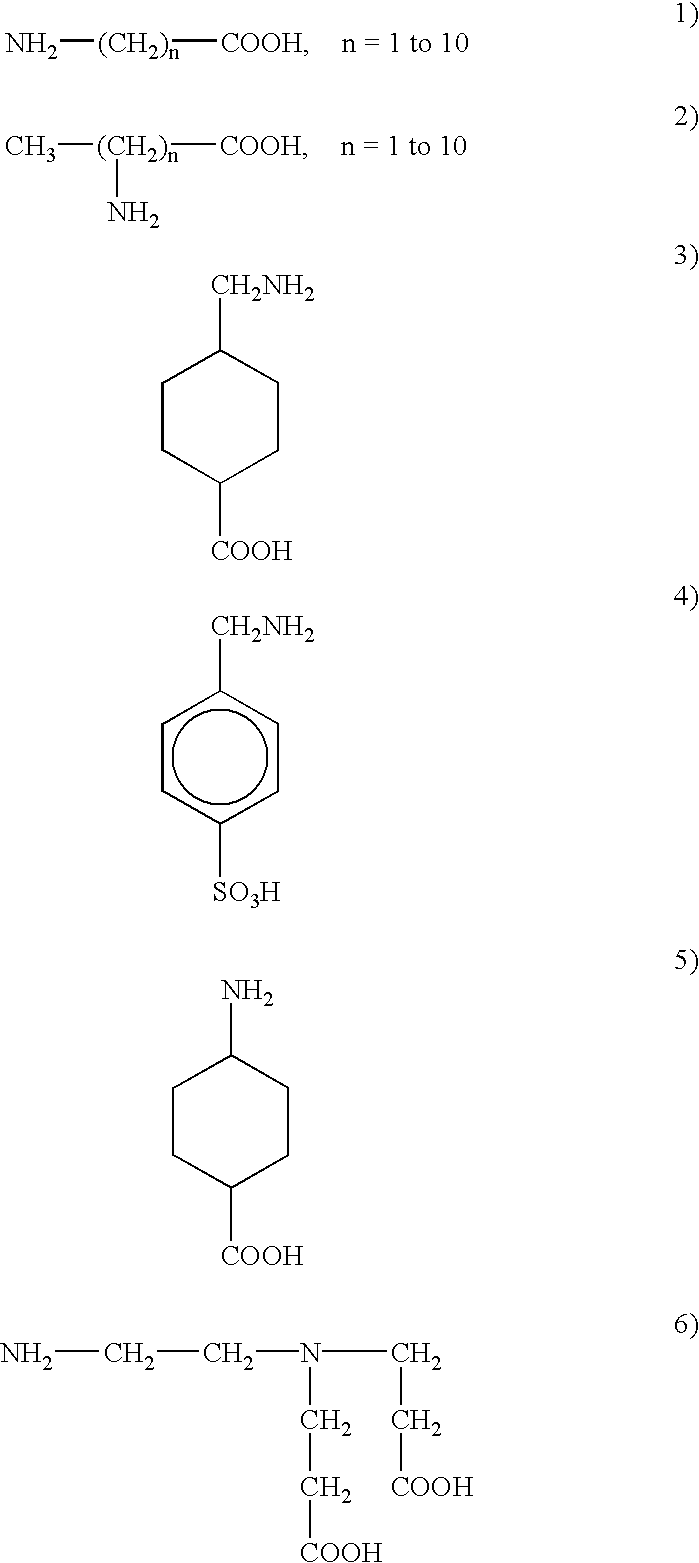Method for prevention of fouling in basic solution by inhibiting polymerization and solubilizing deposits using amino acids
a technology of solubilizing deposits and polymerization, which is applied in the direction of hydrocarbon purification/separation, nuclear engineering, nuclear elements, etc., can solve the problems of obstructing the flow of liquid through the system, affecting the cleaning effect of equipment, and forming polymers, so as to reduce the concentration of oxygenated hydrocarbons, prevent fouling, and remove polymeric deposits
- Summary
- Abstract
- Description
- Claims
- Application Information
AI Technical Summary
Benefits of technology
Problems solved by technology
Method used
Image
Examples
example 1
[0031]20 ml 10–11% strength caustic solution is placed in a 50 ml stoppered conical flask and to it is added 1 ml of vinyl acetate. The mixture is shaken thoroughly. The vinyl acetate hydrolyses to acetaldehyde and undergoes polymerization rapidly to form a deep yellow turbid solution. Polymerization may be enhanced by heating. After 10 minutes of polymerization under basic conditions 1.0 g amino caproic acid is added and the mixture is held at 55° C. for 2 hours. At the end of 2 hours the solution is a clear, transparent wine-red liquid, thus a method is described which can then be used for further prevention of fouling in basic solution.
example 2
[0032]20 ml. 10–11% strength caustic solution is placed in a stoppered 50 ml conical flask and to it is added 1 ml of vinyl acetate. The mixture is shaken thoroughly. The vinyl acetate hydrolyses to acetaldehyde and undergoes polymerization rapidly to form a deep yellow turbid solution. Polymerization is further carried out at 55° C. for 2 hours. After 2 hours of polymerization under basic conditions, a dark red gummy polymer was found floating on the top and the bottom caustic layer was a hazy yellow solution. To this were added 2.8 g of amino caproic acid and the mixture was kept at 55° C. After 24 hours the solution was a transparent wine red liquid, indicating that the polymer that had been present was dissolved. The resulting clear solution is useful for further prevention of fouling in basic solution.
example 3
[0033]A clean four-necked round bottom flask equipped with a thermometer, stirrer and condenser is charged with caprolactum (18 g, 0.1593 mole), sodium hydroxide (7 g, 0.175 g) and 75.0 g water. The mixture is well agitated and heated to 105° C. to 120° C. for a period of six hours. Small samples are periodically withdrawn and checked for conversion using HPLC. The conversion of epsilon caprolactum to six amino hexanoic acid is greater than 75%.
PUM
| Property | Measurement | Unit |
|---|---|---|
| Fraction | aaaaa | aaaaa |
| Fraction | aaaaa | aaaaa |
| Fraction | aaaaa | aaaaa |
Abstract
Description
Claims
Application Information
 Login to View More
Login to View More - R&D
- Intellectual Property
- Life Sciences
- Materials
- Tech Scout
- Unparalleled Data Quality
- Higher Quality Content
- 60% Fewer Hallucinations
Browse by: Latest US Patents, China's latest patents, Technical Efficacy Thesaurus, Application Domain, Technology Topic, Popular Technical Reports.
© 2025 PatSnap. All rights reserved.Legal|Privacy policy|Modern Slavery Act Transparency Statement|Sitemap|About US| Contact US: help@patsnap.com

